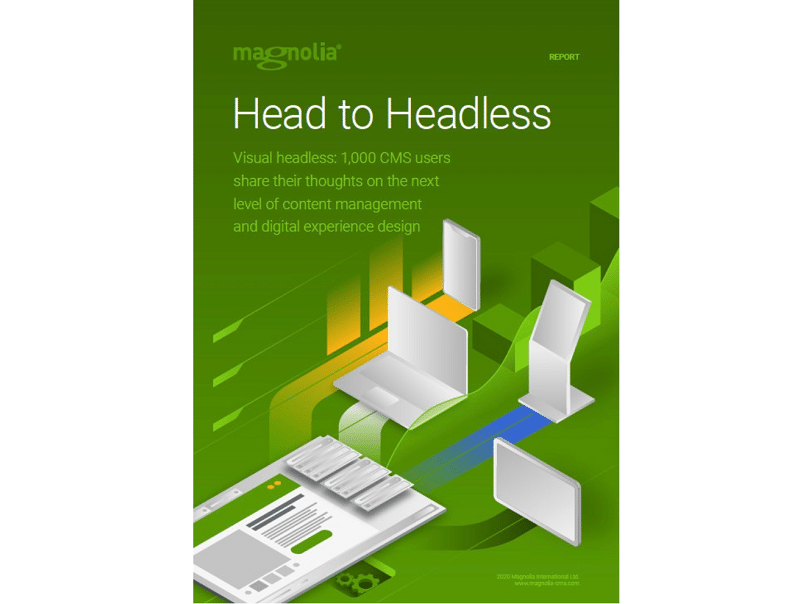
The study, from content management system (CMS) provider, Magnolia, incorporates data from 1000 CMS users working in IT and marketing across the USA, UK, Germany, Spain and Singapore.
Unlike a traditional CMS, where the frontend and backend are connected, in a headless CMS the two are separate — the ‘head’ (frontend) has been removed to allow for publishing content rapidly across multiple channels and devices.
It reveals that since making the switch to headless tech, 35% of marketers have reported a better user experience and 43% feel that they are less reliant on IT.
But while there are many benefits of adopting a headless CMS, there remains a lot of confusion around the technology, with only 1 in 3 marketers saying that they find their headless architecture easier to use than a traditional CMS.
For many, the lack of a visual interface remains a cause for concern, which is encouraging 43% of brands to adopt a hybrid approach — blending headless technology with the traditional full CMS experience. With a hybrid CMS, content can still be created, distributed and re-purposed without limits. It also gives marketers user-friendly drag- and-drop interfaces, WYSIWYG editing and content previews to help manage content.
Commenting on the research, Rasmus Skjoldan, CMO at Magnolia said, “A headless CMS offers a great opportunity to marketers to improve processes and meet long-term goals. However, the lack of a visual interface to design and preview content is proving a significant challenge for marketers.
“A hybrid CMS helps to bridge the gap for marketers by providing a headless CMS architecture, while also giving authors the context and creative control of a traditional CMS. At Magnolia, we offer a unique visual editor for single-page applications (SPA) to complement our headless CMS. The SPA editor provides a visual preview for marketers and content teams, while retaining the flexibility of a headless CMS — ultimately giving marketers the ability to view and manipulate the presentation to the user, yet work with clean, structured presentation-independent content.”
To download the full Head to Headless report, click here.
